Related Research Articles

Sir Arthur Seymour Sullivan was an English composer. He is best known for 14 operatic collaborations with the dramatist W. S. Gilbert, including H.M.S. Pinafore, The Pirates of Penzance and The Mikado. His works include 24 operas, 11 major orchestral works, ten choral works and oratorios, two ballets, incidental music to several plays, and numerous church pieces, songs, and piano and chamber pieces. His hymns and songs include "Onward, Christian Soldiers" and "The Lost Chord".

Sir George Grove was an English engineer and writer on music, known as the founding editor of Grove's Dictionary of Music and Musicians.

Hamish MacCunn was a Scottish late Romantic composer, conductor and teacher. His opera Diarmid, was produced at Covent Garden on 23 October 1897. His other music includes cantatas, Concert overtures, part-songs, instrumental pieces and songs, all markedly Scottish in type. He had a genuine love of Scottish folksong, and although he lived in London he was a lifelong champion of Scottish music and of the country's musical life.

Sir Frederic Hymen Cowen, was an English composer, conductor and pianist.

Frederick Corder was an English composer and music teacher.
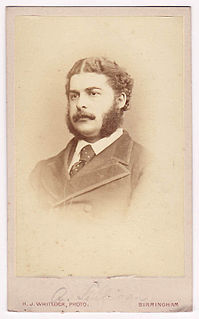
The Overture di Ballo is a concert overture by Arthur Sullivan. Its first performance was in August 1870 at the Birmingham Triennial Festival, conducted by the composer. It predates all his work with W. S. Gilbert, and is his most frequently recorded concert work for orchestra.
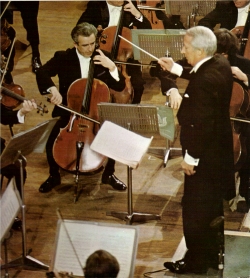
Cockaigne , Op. 40, also known as the Cockaigne Overture, is a concert overture for full orchestra written by the British composer Edward Elgar in 1900–1901.

Sir August Friedrich Manns was a German-born British conductor who made his career in England. After serving as a military bandmaster in Germany, he moved to England and soon became director of music at London's Crystal Palace. He increased the resident band to full symphonic strength and for more than forty years conducted concerts at popular prices. He introduced a wide range of music to London, including many works by young British composers, as well as works by German masters hitherto neglected in England. Among his British protégés were Arthur Sullivan, Charles Villiers Stanford, Hubert Parry, Hamish MacCunn, Edward Elgar and Edward German.
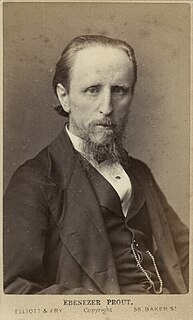
Ebenezer Prout was an English musical theorist, writer, music teacher and composer, whose instruction, afterwards embodied in a series of standard works still used today, underpinned the work of many British classical musicians of succeeding generations.

Barton McGuckin was an Irish tenor singer of renown, who made his career principally in Britain with the Carl Rosa Opera Company, but also gained a wide success in oratorio and concert. Richard Ellmann put him forward as the model for Bartell D'Arcy in James Joyce's story "The Dead", but this identification has been questioned in recent years.
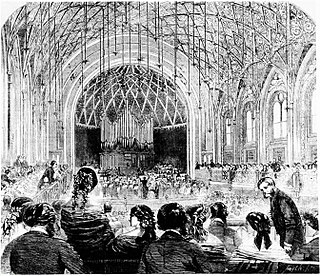
St. James's Hall was a concert hall in London that opened on 25 March 1858, designed by architect and artist Owen Jones, who had decorated the interior of the Crystal Palace. It was situated between the Quadrant in Regent Street and Piccadilly, and Vine Street and George Court. There was a frontage on Regent Street, and another in Piccadilly. Taking the orchestra into account, the main hall had seating for slightly over 2,000 persons. It had a grand hall 140 feet (43 m) long and 60 feet (18 m) broad, the seating was distributed between ground floor, balcony, gallery and platform and it had excellent acoustics. On the ground floor were two smaller halls, one 60 feet (18 m) square; the other 60 feet (18 m) by 55 feet (17 m). The Hall was decorated in the 'Florentine' style, with features imitating the great Moorish Palace of the Alhambra. The Piccadilly facade was given a Gothic design, and the complex of two restaurants and three halls was hidden behind Nash's Quadrant. Sir George Henschel recalled its 'dear old, uncomfortable, long, narrow, green-upholstered benches with the numbers of the seats tied over the straight backs with bright pink tape, like office files.'

William Shakespeare was an English tenor, teacher and composer.

Thomas Wingham was an English composer, known as a teacher and for his time at Brompton Oratory.
The Pageant of Empire was name given to various historical pageants celebrating the British Empire which were held in Britain during the early twentieth century. For example there was a small Pageant of Empire at the town of Builth Wells in 1909. In 1911 a giant Pageant of Empire took place at the Festival of Empire at the Crystal Palace in Sydenham, where thousands of amateur performers acted out historical scenes The most notable was the Pageant of Empire which took place in London in 1924.
The Severn Suite, Opus 87, is a musical work written by Sir Edward Elgar. It is a late composition, written in 1930, the result of an invitation to write a test piece for the National Brass Band Championship. It was dedicated to his friend, the author and critic George Bernard Shaw.
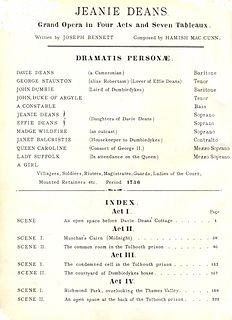
Jeanie Deans is an opera in four acts by Hamish MacCunn (1868–1916) set to a libretto by Joseph Bennett which is loosely based on Walter Scott's 1818 novel, The Heart of Midlothian and is named after its heroine, Jeanie Deans. The opera was commissioned by the Carl Rosa Opera Company and first produced at the Royal Lyceum Theatre in Edinburgh on 15 November 1894 to great acclaim.

Classical music in Scotland is all art music in the Western European classical tradition, between its introduction in the eighteenth century until the present day. The development of a distinct tradition of art music in Scotland was limited by the impact of the Scottish Reformation on ecclesiastical music from the sixteenth century. Concerts, largely composed of "Scottish airs", developed in the seventeenth century and classical instruments were introduced to the country. Music in Edinburgh prospered through the patronage of figures including the merchant Sir John Clerk of Penicuik. The Italian style of classical music was probably first brought to Scotland by the cellist and composer Lorenzo Bocchi, who travelled to Scotland in the 1720s. The Musical Society of Edinburgh was incorporated in 1728. Several Italian musicians were active in the capital in this period and there are several known Scottish composers in the classical style, including Thomas Erskine, 6th Earl of Kellie, the first Scot known to have produced a symphony.

Music of Scotland in the nineteenth century includes all forms of music production in the period, in Scotland or by Scottish people.
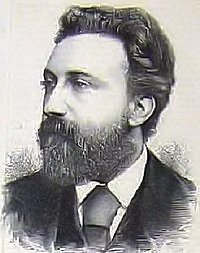
Henry Robert Gadsby was an English composer, music educator and church organist.
John Ansell was a British composer of light classical music.